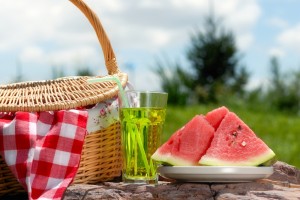The Ferragosto
The Ferragosto
The Ferragosto
-
Hannah
-
Hannah
 Were I to write now a scene for the characters of my latest novel, The Echoes of Love, set in Italy, it would include them relaxing and enjoying today’s public holiday, the Ferragosto. Celebrated each 15th August, the Ferragosto is a favourite holiday in Italy – so much so that many extend it beyond the day itself, and tourists in Italy often find businesses closed for much of the month!
Were I to write now a scene for the characters of my latest novel, The Echoes of Love, set in Italy, it would include them relaxing and enjoying today’s public holiday, the Ferragosto. Celebrated each 15th August, the Ferragosto is a favourite holiday in Italy – so much so that many extend it beyond the day itself, and tourists in Italy often find businesses closed for much of the month!
Before the Ferragosto,Romans celebrated several festivals in the month of August, to mark the harvest and the end of an arduous period of toiling on the earth. Come 18 BC, the Roman emperor Augustus formalised the festivals into one, the Ferragosto, which was called Feriae Augusti (Augustus’s rest) and ran through all of August. During the rest period, people enjoyed horse races, as in the Paliodell’Assunta in Siena (see my recent post ‘The Joust of the Bear’ for more on the palio). Work animals were allowed to rest – and sometimes decorated with flowers; and masters tipped their workers (this later became compulsory). For a brief time, all came together as equals and enjoyed the summer.
When Augustus began the holiday in relation to the harvest, much was made of honouring ancient gods:
- Conso,god of the fields
- Diana, goddess of wood, cycles of the moon and motherhood
- Opi,goddess of fertility
- Vertumno,god of the seasons and the harvest
But then the Catholic Church took the holiday as its own (it’s unclear when, but it was established by the Middle Ages), and it’s now celebrated as the Holy Day of Obligation in memorial of the Assumption of the Virgin Mary.
Fast-forward to the 20th century and the Ferragosto became associated with travel, when in the 1920s the state put on ‘People’s Trains of Ferragosto’ to offer means by which to go on holiday. The discounted fares meant those who’d been unable to afford holidays could go on a gitafuori porta (day trip outside the city gates).
Initially, many of the inland Italians went to the hills to walk and picnic with a view. In 1832, for example, the press reported a huge crowd on hills outside Rimini – somewhat defeating the object of getting away from the crowds of the city! But the water called: ancient rites calling on Neptune to purify. Coastal towns began to see investment, and the Adriatic Riviera coast became a major draw. For those of Rome who couldn’t make it to the sea, the Piazza Navona was flooded for public bathing.
Today, the tradition of travelling is still very much honoured, and many Italians get away for at least the day, if not several. Beyond enjoying nature, from cities to towns to villages, there are plenty of festivities to enjoy: bonfires and fireworks, torchlit processions, cavalcades, horse races, flag throwing, dances, concerts…
And such feasts! For me, my overriding memory of the Ferragosto when I visited Italy was the taste of fresh watermelon. It’s available in abundance, from roadsides stands, grocers, even bobbing in fountains to stay cool! It’s the ultimate fruit to cool and refresh in the hot weather. It’s not, though, a food that easily affords a delicate and polite eating etiquette; as the Romans say: ‘Cocomero: Magni, bevi e telavi ‘a faccia’; ‘Watermelon: with it you eat, drink and wash your face all in one go’!
And so, in the scene I would write for Paolo and Venetia of The Echoes of Love, there would be a mountain with a stunning view, and an orb of fire dancing in a dazzlingly blue sky, and a picnic blanket and a hamper, and a feast including hunks of fresh pink watermelon – but napkins; plenty of those!
Buon Ferragosto!
An excellent choice, congrats! This region is a rich source of inspiration.